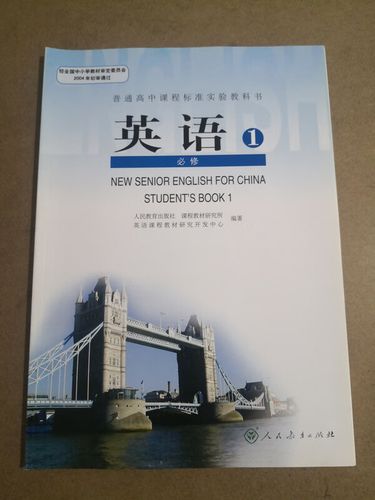人教版高一英语必修一单词表图片
Title: Exploring People's Education: An Overview of the First Compulsory Course in High School English by the People's Education Edition
Introduction to People's Education Version
In the realm of high school education in China, the People's Education Edition holds a significant place. Among its curriculum, the first compulsory course in English for senior high school students, known as "必修一" (Compulsory Course One), is pivotal. This course, typically studied by firstyear students, lays the groundwork for English language acquisition and proficiency. Let's delve into the contents, objectives, and strategies associated with this course.
Course Content
The syllabus for the first compulsory English course encompasses a diverse range of topics aimed at fostering language skills and cultural understanding. It typically includes:
1.
Language Skills Development
: Emphasis is placed on the four fundamental language skills: listening, speaking, reading, and writing. These skills form the cornerstone of effective communication in English.2.
Grammar and Vocabulary
: Essential grammatical structures and vocabulary are introduced and reinforced throughout the course. Mastery of these elements is crucial for comprehension and expression in English.3.
Text Analysis
: Students engage with a variety of texts, including literary excerpts, articles, and multimedia resources. Through analysis and discussion, they deepen their understanding of language use and literary techniques.4.
Cultural Awareness
: The course integrates cultural elements from Englishspeaking countries, providing students with insights into different customs, traditions, and perspectives.Objectives
The primary objectives of the first compulsory English course are multifaceted:
1.
Language Proficiency
: By the end of the course, students should demonstrate proficiency in listening, speaking, reading, and writing English at a foundational level. This proficiency enables them to comprehend basic texts, participate in simple conversations, and express themselves coherently in written form.2.
Critical Thinking Skills
: Through textual analysis and discussion, students develop critical thinking skills essential for academic success and realworld problemsolving.3.
Cultural Competence
: Exposure to diverse cultural content fosters cultural competence and global awareness among students, preparing them for an interconnected world.4.
Lifelong Learning
: The course aims to instill a passion for learning English beyond the classroom, encouraging students to pursue continuous selfimprovement and language acquisition.Teaching Strategies
To achieve the outlined objectives, educators employ various teaching strategies tailored to the needs of diverse learners:
1.
Communicative Approach
: Emphasizing reallife communication, this approach encourages active participation and interaction in English through roleplays, discussions, and collaborative activities.2.
Differentiated Instruction
: Recognizing the diverse learning styles and abilities of students, teachers employ differentiated instruction techniques to cater to individual needs and maximize learning outcomes.3.
Technology Integration
: Leveraging technology enhances learning experiences by providing access to authentic materials, multimedia resources, and interactive tools that engage and motivate students.4.
Assessment for Learning
: Formative assessments, such as quizzes, presentations, and projects, are utilized to gauge student progress and provide timely feedback for improvement.Conclusion
The first compulsory English course in high school, as presented by the People's Education Edition, serves as a cornerstone for language learning and cultural exploration. By embracing a holistic approach to language education and employing effective teaching strategies, educators empower students to develop essential language skills, critical thinking abilities, and cultural competence. Through dedicated effort and engagement, students embark on a transformative journey towards linguistic proficiency and global citizenship.









